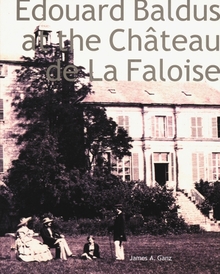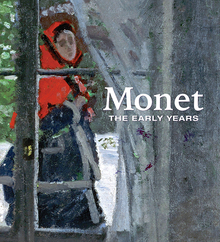The Troubled Republic
WARNING
You are viewing an older version of the Yalebooks website. Please visit out new website with more updated information and a better user experience: https://www.yalebooks.com
Visual Culture and Social Debate in France, 1889–1900
Richard Thomson

Read this book online via the A&AePortal, our art and architectural history eBook platform. To learn more about how to access this book, please contact us.
Out of Print
Fin-de-siècle France was a period of unrest, with strikes, demonstrations, and anarchist terrorism reflecting deep social and political differences. Yet at the same time, this decade produced a vibrant visual culture—monumental sculpture, mural decoration, avant-garde painting, posters, illustrations, and photography—much of which was used to articulate France’s ideological arguments. This fascinating book shows how four key issues in social debate were treated by contemporary artists.
Richard Thomson begins by exploring disquieting attitudes toward the body and sexuality that resulted from France’s concerns about national decadence after its defeat in the Franco-Prussian War. He then considers how artists depicted crowds and represented public discomfort about mass unrest. Next he discusses religious imagery during a decade when the Catholic Church was attempting to come to terms with Republicanism. And finally he addresses the question of revenge against Germany for the annexation of Alsace-Lorraine, showing that it was kept alive in contemporary art.
Richard Thomson is Watson Gordon Professor of Fine Art at Edinburgh University.
"Thomson's chapters stand alone as discrete pieces but they also add up to a fascinating discussion of the relationship between public and private issues during the 1890s. . . . Thomson is an art historian who is clearly at ease with historical sources, both secondary and primary. The bibliography and notes are rich sources of information. Above all, the beautifully reproduced illustrations support Thomson's case that visual imagery played an important role in the making of modernity. Well-written and accessible, [the book] should be of interest not only to students but also to specialists, art historians, and historians alike."—Venita Datta, H-France Review
“In addition to its easily readable text, the book is heavily and attractively illustrated, with many images rarely seen in print. Their juxtaposition suits the author’s twofold intent: to show that the visual art of the period connects to its social turmoil and that la belle époque is worth investigating in detail, even today. Highly recommended for all libraries.”—Library Journal
"In demonstrating, in this gripping book, how visual culture could, in complex and by no means always intentional ways, both articulate and shape attitudes, [Thomson] has made an invaluable contribution to the history of the Third Republic, and to historical method itself."—Times Literary Supplement
"An excellent book about a fascinating decade in modern history. . . . The author writes with grace and wit, and the book is stunningly illustrated. This is an exciting book, one that will delight both lovers of art and those interested in the political and intellectual history of this anxious decade."—Virginia Quarterly Review
"A splendid tour de force. this book will have great value for both French art historians of the fin de siècle and political, social, and religious historians of the period as well. Because of this broadly based utility, it belongs, at the very least, in all academic libraries."—Eric A. Arnold, Jr., History
Publication Date: March 11, 2005
150 b/w + 54 color illus.




















